It never ceases to amaze me just how connected we are, from Lagos to Laos. Scent leaves, Perilla, Shiso, of the family Lamiaceae. These herbaceous, perennial shrubs are cousins in the mint family
I thought I knew everything about this plant. Growing up, it featured prominently in pepper soup, added at the last minute to bring clean citrus flavours and a distinctive scent. In Port Harcourt, I learnt to enjoy it in Kekefia – unripe pottage. It made the mandatory unripe plantains more than edible.
What changed things for me was having the plant in my garden. As is wont to happen when you get close to a thing, you begin to see more. What I noticed was the young leaves bore none of the toughness of the older leaves. That the buds were amazing as flavour pearls in oven-baked Moin-moin… and that you could do so much more than have it in soup.
Names
Scent leaves go by many names. Ocimum gratissimum in Latin; Scent leaf, Clove basil or tea bush in ‘Nigerian English’ and a host of other names in various dialects. The Yorubas of the south west call it Efirin, the Igbos of the south east – Ncho-anwu, Ahuji; The Edos, of the south ‘west/central know it as Aramogbo, the Ibibio of south-south call it Ntong and the Hausa of Northern Nigeria, Daidoya.
It is also known as tree basil – probably as a result of its woody stems, and wild basil in Hawaii.
Appearance
It is found in the tropics, with Africa and Asia having the most variants of the species. This surprised me and it didn’t at the same time. There’s so much we have in common with countries that lie on the same latitude – near and far, from South India with its coconuts to the variety of produce in Thailand that matches Nigeria’s.
Leaves
A typical scent leaf has a curvy peak with serrated/ wavy edges.
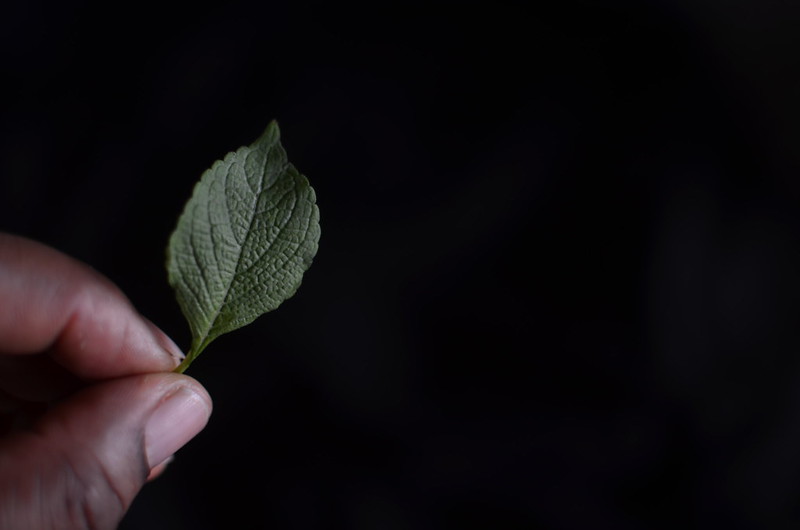
The leaf itself isn’t smooth – both back…
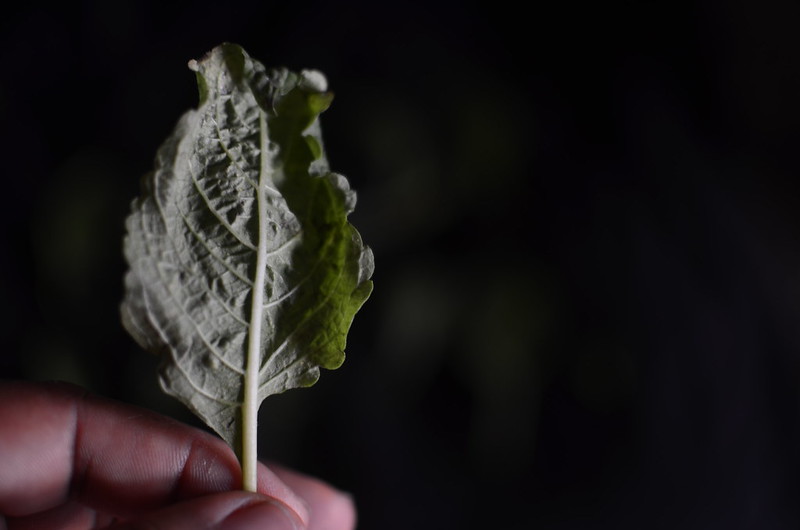
…and front are textured. I’ve found the older, larger leaves hardy and woody in flavour,
compared with the fresh, young, smaller ones, which I prefer.
Yes, they are cousins with mint. Where does the resemblance start or stop :). Well, mint leaves tend to have fairly well-defined serration on the edges where as I find that the outline of the scent leaves vary from serrated to wavy.
The texture of the leaves are different too with mint being a lot more delicate in touch and feel compared with the hardier scent leaves.
I don’t want to use colour as an indice even though here, it looks the part :).
One interesting observation is in size. Mint leaves rarely grow larger than an inch or thereabouts unlike scent leves which can be 2/ 3 inches.
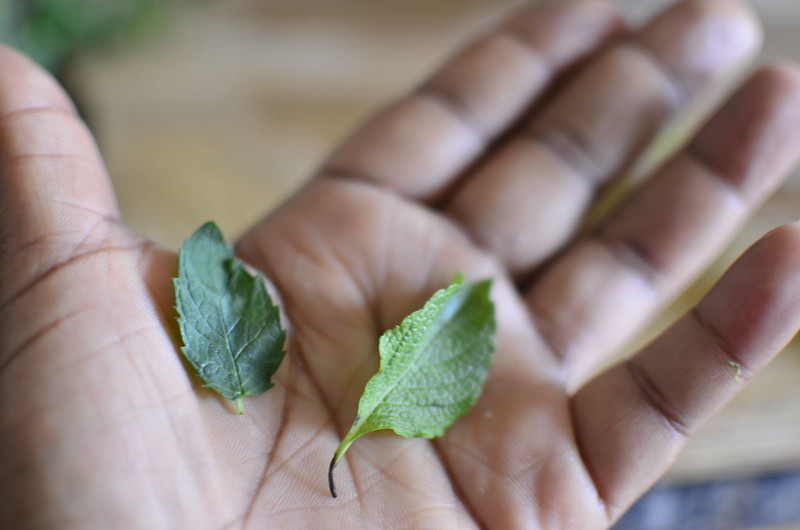
Flavour
Grassy with a clean, citrus flavor and anise, licorice notes. Works well in broths and syrups. Could be used like mint, in tea and mojitos.
Nutritive Benefits
Scent leaves are nutrient-rich – high in calcium, phosphorous, iron and vitamins A, K and C. Like Agbalumo.
The Scent leaf has been reported to be rich in plant chemicals. Phytochemical evaluation of the plant has shown that it is rich in alkaloids, tannins, phytates, flavonoids and oligosaccharides (Ijeh et al, 2004).
It’s no wonder they are seen as a cure-all.
In trado-medical practice, scent leaf is extensively used throughout West Africa as anti-malarial, mosquito repellent and anti-convulsant.
The crushed leaf juice is used in the treatment of convulsion, stomach pain and catarrh. Oil from the leaves has been shown to possess antiseptic, antibacterial, and antifungal activities (Ezekwesili et al, 2004). O. gratissimum has proved to be an effective anti-microbial (Orafidiya et al, 2001) and hypoglycemic and hepatoprotective agent
Uses
- You can do more with the bigger leaves than just chop them up and add at the last minute to pepper soup and stews, although doing so is perfectly acceptable and delicious
- You could sun-dry it, if you have an excess
- Make a dip, that becomes a curry sauce or ‘pesto’
- Take a leaf out of the Japanese and Koreans, and how they use Shiso or Perilla leaves – as wraps, with sushi etc
- I use it to poach fruit as well – a sweet application of former savoury notes
- Make an oil…and more

What do you do with Scent leaves? What would you do?[wpurp-searchable-recipe]The Anatomy of Scent Leaf – – – [/wpurp-searchable-recipe]

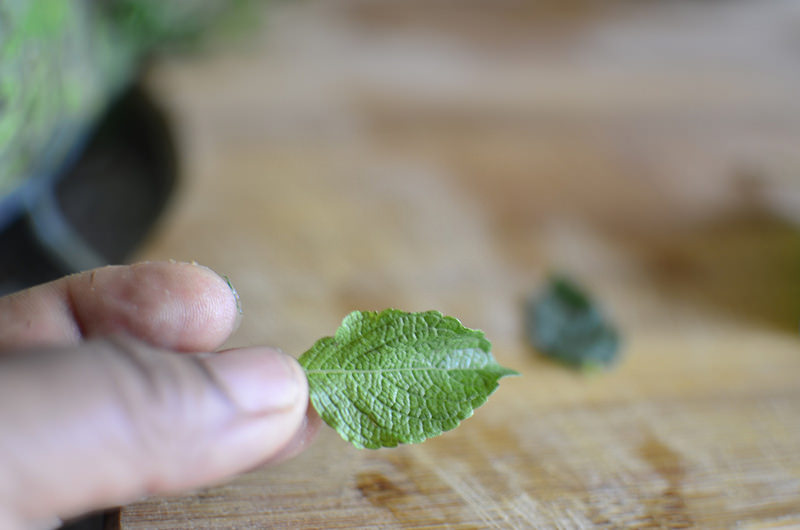
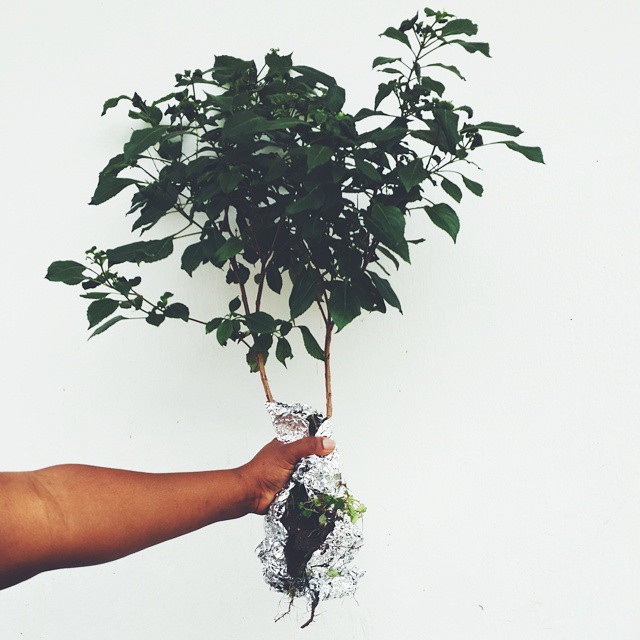

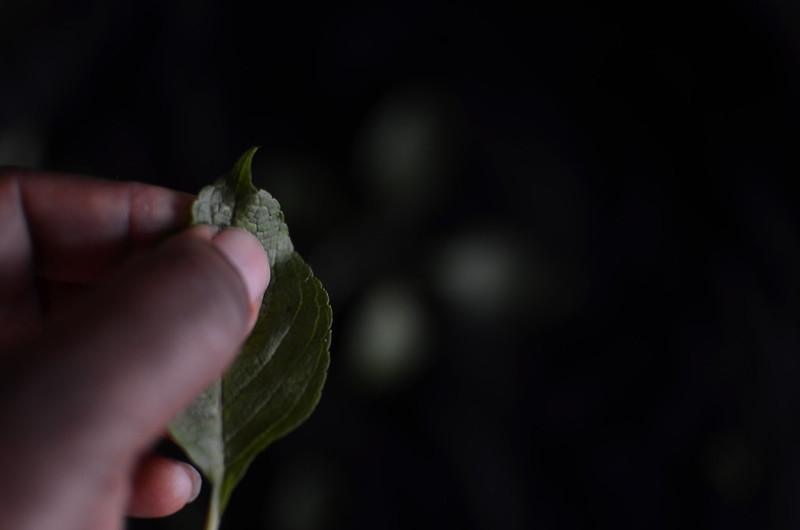


Mint and scent leaf which plant grows taller.
I know that one grows short with smaller leaves while the other grows tall with broad leaves.
Which is mint and which is scent leaf?
Scent leaf grows taller, and has broader leaves than mint
I’m really getting confused. Do Mint leaves, Scent leaves and lemon balm share same health benefits; can they be interchanged one for another?
It depends on the individual – perhaps research the ones of interest and compare. Best
Please , is scent leaf same as basil. I stay in US and that’s all I can see
No, it isn’t. It’s similar to Japanese Shiso or Vietnamese Perilla. It does have flavours that are similar to mint and basil but not entirely
please i really need to know more about this mint and scent leaf, because some said they are the same. am really confuse, i wish i can get this mint leaf so that i can compare it myself. help me thanks
Where can I get mint leave in Cameroon I really do need it and I have looking for it
Please where can I get mint leave in Cameroon I have look for it and I really do need Italian
I used to squeeze out the fresh juice from a few leaves, as my nose bleed medication. It stops it immediately. Never failed. Only problem is, you have to get the fresh leaves. The dried ones will not work.
Hey! I found your blog! I stumbled upon your instagram page and I follow ardently. I have just used these leaves to try something I hadn’t tried before,but I wanted to find the botanical name,that’s how I found you. From Google search. This is quite educational. I am bookmarking! Thanks a lot! Oh and you should try these leaves (if you havent) in the local beans pottage. Or local rice. Yum!
with explanations,you mean to say that scent leaves is also called basil leaves?
It will suprise you to knw that you can make the best vegetable soup with scent leaf. Arigbe that’s what we call it it my dialect. get enough amount of it and cut in pieces, wash a little and cut water leaf and add. per boil your fresh fish or titus and add per per, oil and your scent leaf. leave to cook for ten minutes and add the water leaf. its the best vegetable soup you can taste. lest I forget it’s also used to make soup for women who can bear children and those who usually have miscarriage. I’ll keep you posted on scent leaf uses and benefits
Thank you, much
This is great!
I found your recipe while googling Arigbe plant.
In Chimamanda Ngozi Adichie´s book, Half of a Yellow Sun, a servant makes stew using Arigbe and says it calms down a person´s heart. Now, I only have to find the Arigbe plant here in Seoul, South Korea.
what is the yoruba name for mint leaf
Hi, I don’t know what the Yoruba name for mint is. Perhaps ask for mint…you might be surprised
Eferin
The yoruba name of it is Efinrin, its of two type the one with big leaves and the small leaves though both scent even the one with small leaves have cents more than the big leaves moreover the big leaves have much medicinal benefits than the small leaves
Thank you
Efirrin
Please what’s the yoruba name for d mint leaf
CommentSo much like this leave but i use to boil it after washing and drink the water after it gets cool…. Is it good this way?
Please i want to clarify something here, scent leave and mint leave are two difference leave. And also please why is it that we cant easily find mint leaves here in Nigeria. And please if you know where i can get mint leaves in Lagos, please let me know, Thanks your articles are wonderful.
No Sammy, scent leaves and mint leaves aren’t the same.
I find my mint leaves in a few stores in Lagos, and markets – all on the Island.
Stores – Spar, Goodies, Supermarket, Shoprite (same/ similar shops on the Mainland will have)
Markets – In VI: Veg store on Idowu Martins, near Mega Plaza; Under the bridge market – opposite Law school on Ozumba
Success
Though this may be coming late. I used to get my mint leaves from the popular Mile 12 market in Lagos, but now that they have been relocated to Ogere in Ogun, I think that’s where you will likely get it. Thank you
wow o o! kitchen butterfly
scent leave wonderful herb. i love your program
i love cooking nice food. Thanks
Found you again!!
Once stumbled on your ‘Tomato Sugo (adapted from Andre Ursini’s recipe) and looooooved it.
This post is yet another proof of your ‘traveller, by plate’ nature. Thanks. 😀
Thank you :). Much
Is scent leaf known by another name in the Americas?
Has anyone reading here had success growing it at home in South Florida, USA? I would love to give it a try if I could get a cutting. 🙂
Hi Zandra – it is int he same family as Perilla and Shiso. I’m sure those would be available at Asian stores. I don’t know anyone who has grown scent leaves in the US but I promise to let you know if I find. Stay well.
Nchanwu, oh my days. My mom also calls it Arigbe.
I was only introduced to it two years ago, when my mom started growing it in the house.
I haven’t grown up enough to like leafy veggies, but I love this one so much. I usually use it in pottage- ripe and unripe plantain, yam, potatoes.
Last Sunday, I needed to make the mandatory sunday rice special. We had had jollof two Sundays in a row, and I did not have the veggies I wanted for fried rice. I decided to do a Thai-ish fried rice, an imitation at best. With only one green pepper, I needed something for extra flavour. When I added onions to the hot oil in the pan, I threw nchanwu in, and my nose immediately took a hit as the scent released. It made my improvised rice work so beautifully. Everyone loved it., and I’ll definitely be doing more with this. Maybe try it in moin-moin as you have 🙂
I’ve never heard of scent leaf, Ozoz, but I’m amazed at how similar it looks to mint. I wish so much I could fly over to stay with you and learn from you about how to cook the foods of your country. 🙂 XO